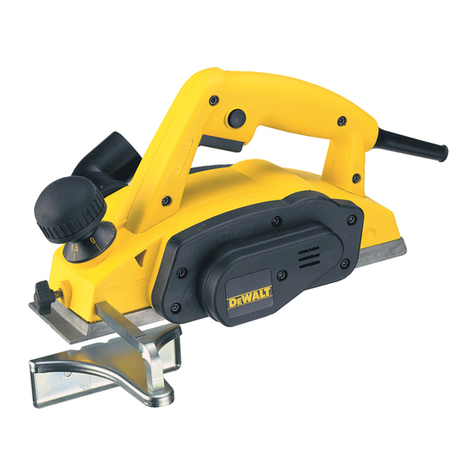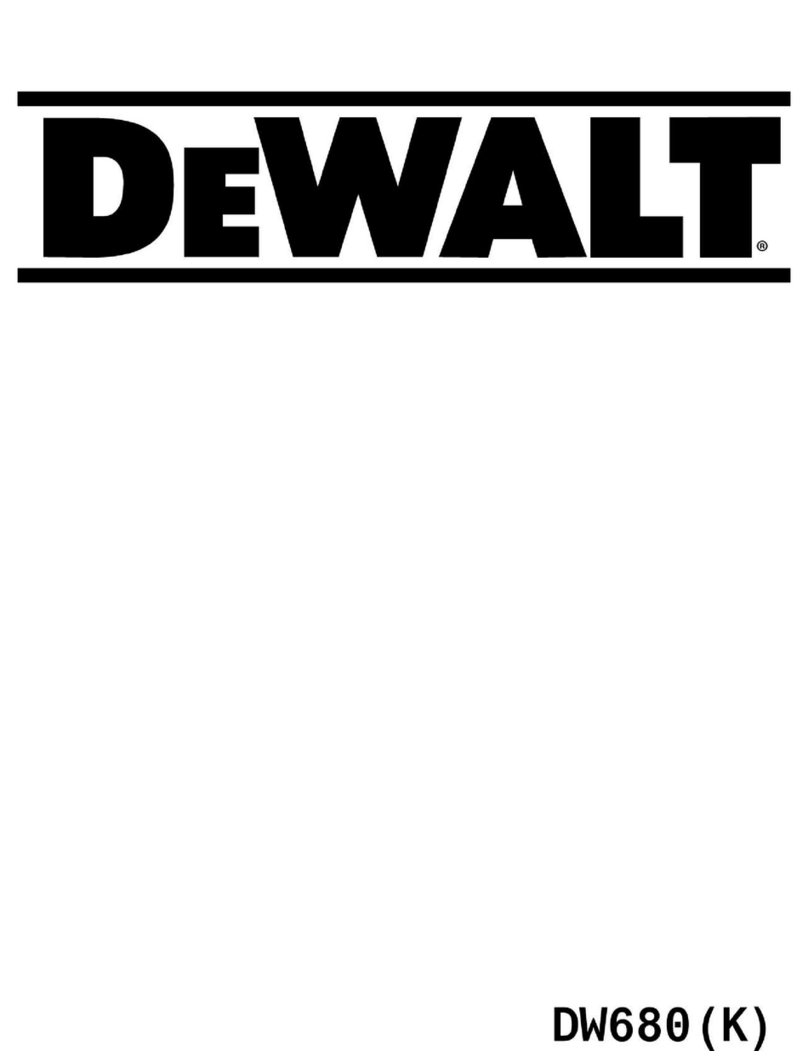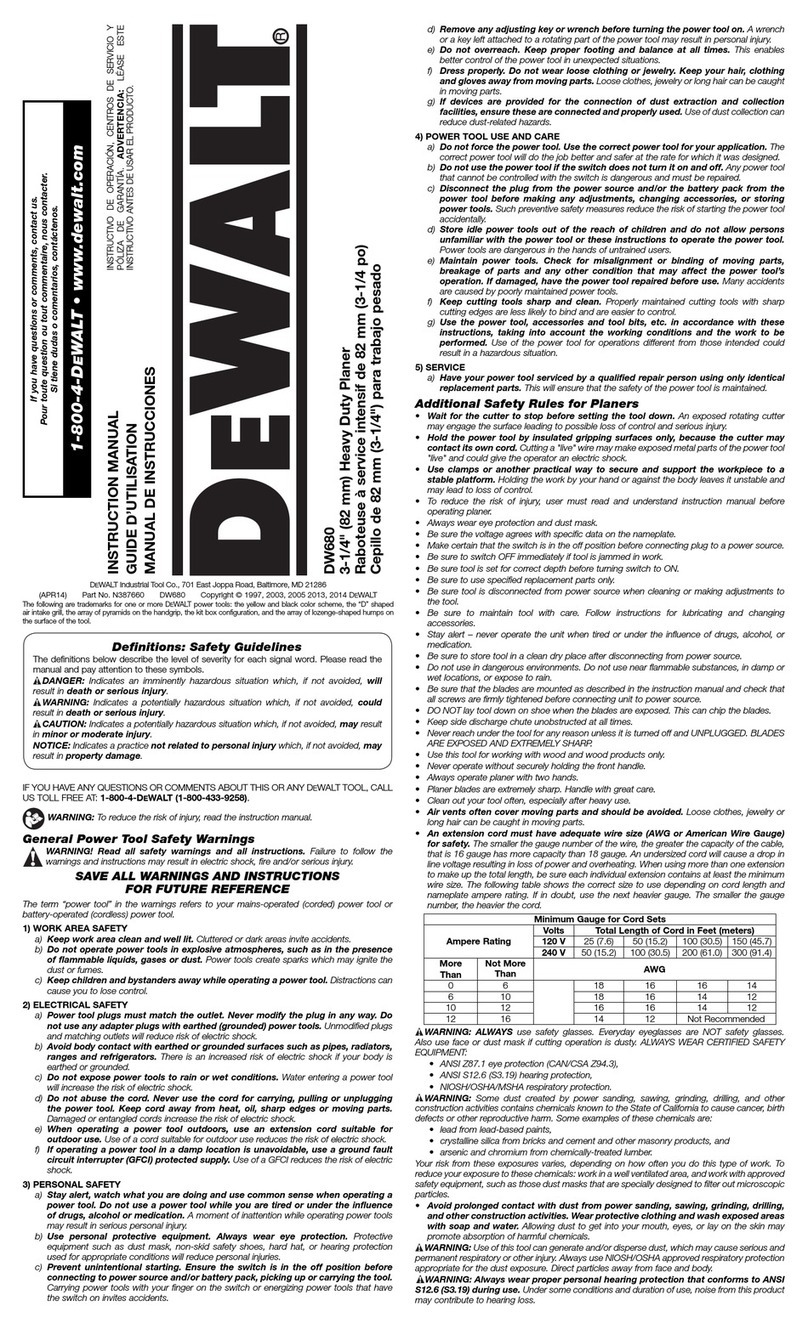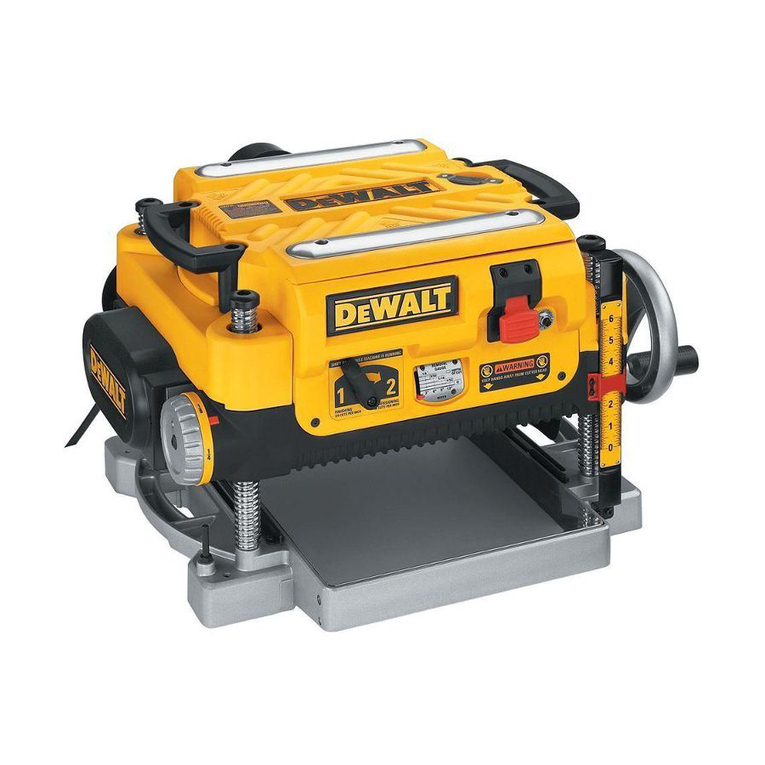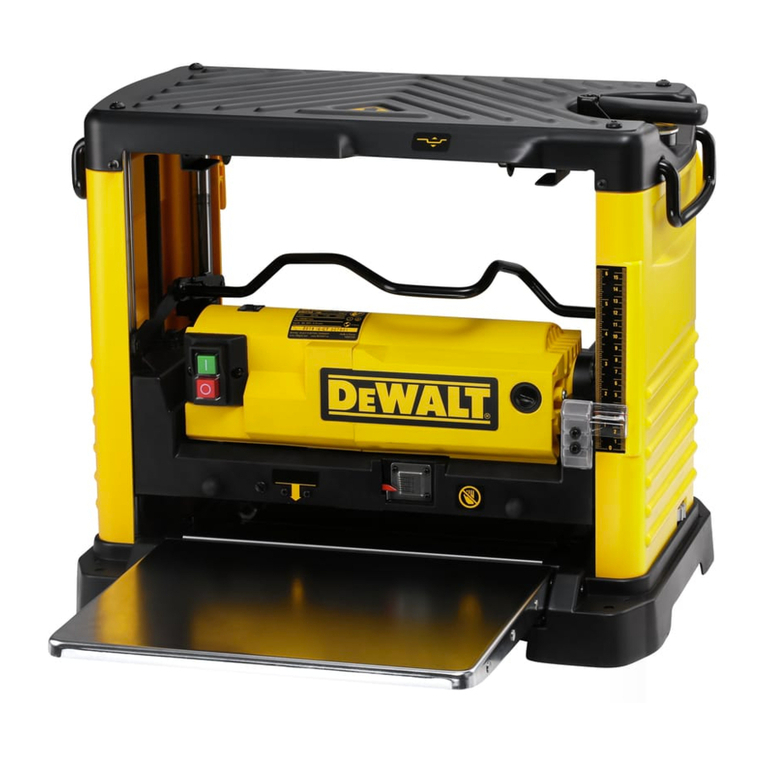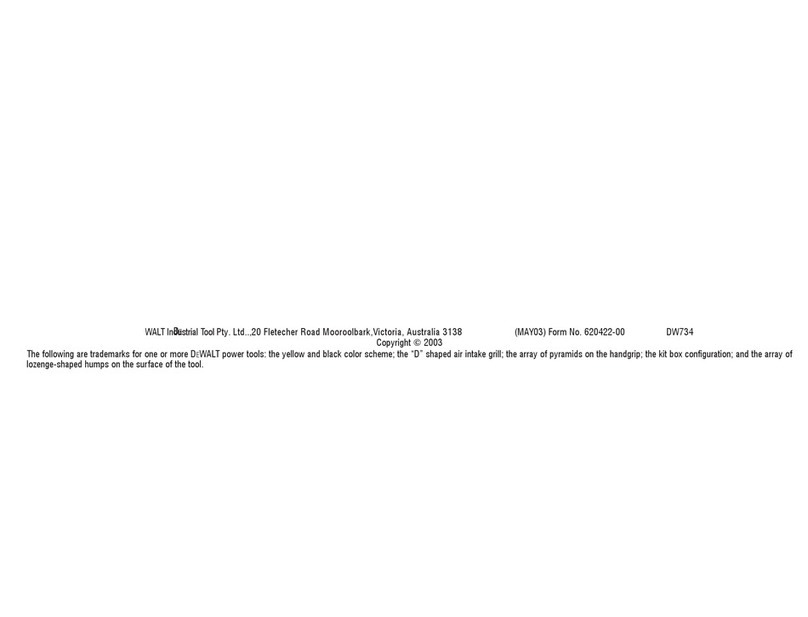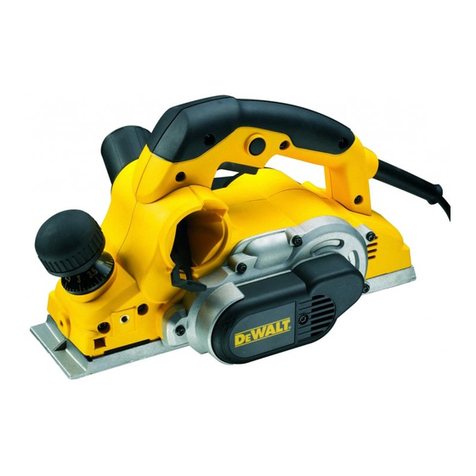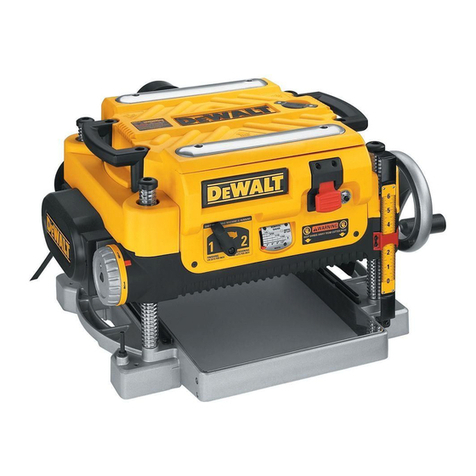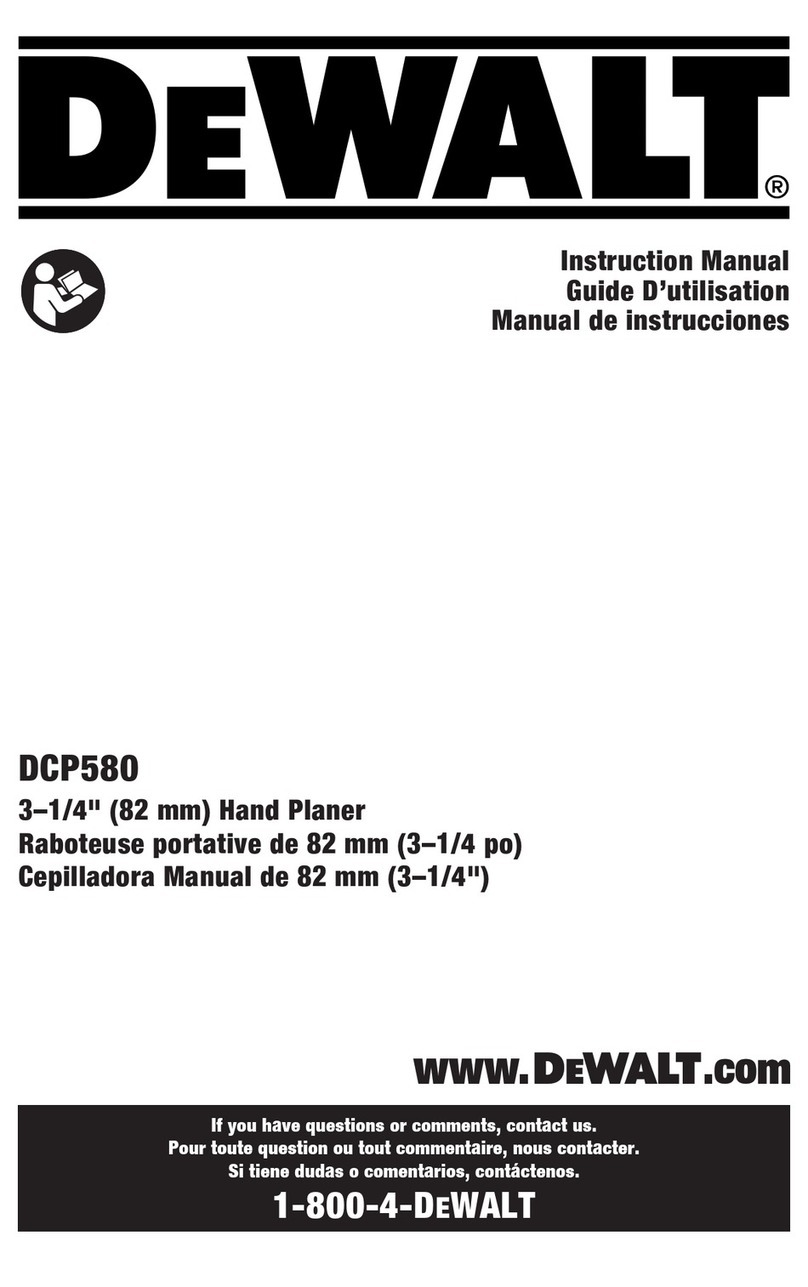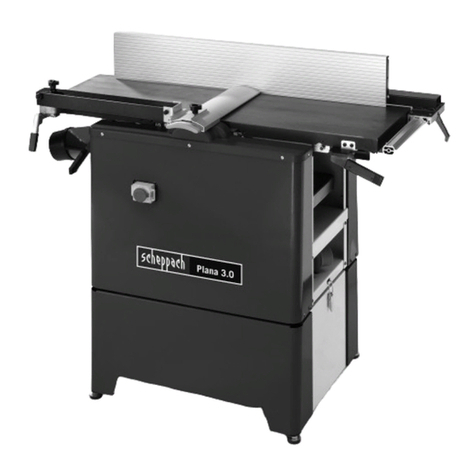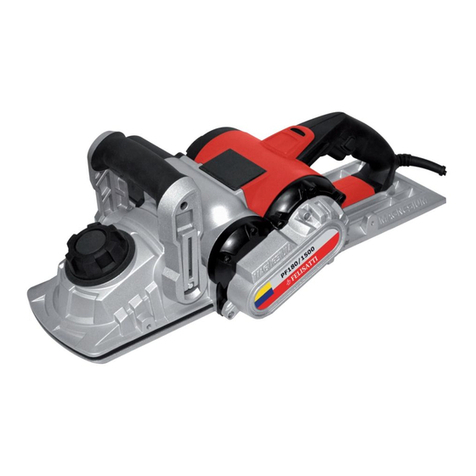
6
ENGLISH
- When not in use, tools must be stored in a dry place and locked up securely, out of reach
ofchildren.
6 . Do not force thetool.
- It will do the job better and safer at the rate to which it wasintended.
7 . Use the righttool.
- Do not force small tools to do the job of a heavy duty tool. Do not use tools for purposes
not intended; for example do not use circular saws to cut tree limbs orlogs.
8 . Dressproperly.
- Do not wear loose clothing or jewellery, as these can be caught in moving parts. Non-skid
footwear is recommended when working outdoors. Wear protective hair covering to
contain longhair.
9 . Use protectiveequipment.
- Always use safety glasses. Use a face or dust mask if working operations create dust or
flying particles. If these particles might be considerably hot, also wear a heat-resistant
apron. Wear ear protection at all times. Wear a safety helmet at alltimes.
10 . Connect dust extractionequipment.
- If devices are provided for the connection of dust extraction and collecting equipment,
ensure these are connected and properlyused.
11 . Use only the push stick provided by themanufacturer.
- This push stick provides sufficient distance of the hand from theblade.
- Never use a damaged or cut push stick. A damaged push stick may break causing your
hand to slip into theblade.
- If small workpieces are inserted by hand, there is an increased risk of injury. It's
recommended to use the push-stick. Keep your hand at a safe distance from theblade.
12 . Do not abuse thecord.
- Never yank the cord to disconnect it from the socket. Keep the cord away from heat,
oil and sharp edges. Never carry the tool by itscord.
13 . Securework.
- Where possible use clamps or a vice to hold the work. It is safer than using your hand and
it frees both hands to operate thetool.
14 . Do notoverreach.
- Keep proper footing and balance at alltimes.
15 . Maintain tools withcare.
- Keep cutting tools sharp and clean for better and safer performance. Follow instructions
for lubricating and changing accessories. Inspect tools periodically and if damaged have
them repaired by an authorized service facility. Keep handles and switches dry, clean and
free from oil andgrease.
16 . Disconnecttools.
- When not in use, before servicing and when changing accessories such as blades, bits and
cutters, disconnect tools from the powersupply.
17 . Remove adjusting keys andwrenches.
- Form the habit of checking to see that adjusting keys and wrenches are removed from the
tool before operating thetool.
18 . Avoid unintentionalstarting.
- Do not carry the tool with a finger on the switch. Be sure that the tool is in the “off”
position before pluggingin.
19 . Use outdoor extensionleads.
- Before use, inspect the extension cable and replace if damaged. When the tool is used
outdoors, use only extension cords intended for outdoor use and markedaccordingly.
20 . Stayalert.
- Watch what you are doing. Use common sense. Do not operate the tool when you are
tired or under the influence of drugs oralcohol.
21 . Check for damagedparts.
- Before use, carefully check the tool and mains cable to determine that it will operate
properly and perform its intended function. Check for alignment of moving parts, binding
of moving parts, breakage of parts, mounting and any other conditions that may affect its
operation. A guard or other part that is damaged should be properly repaired or replaced
by an authorized service centre unless otherwise indicated in this instruction manual.
Have defective switches replaced by an authorized servicecentre. Do not use the tool if the
switch does not turn it on andoff. Never attempt any repairsyourself.
WARNING: The use of any accessory or attachment or performance of any operation
with this tool other than those recommended in this instruction manual may present a
risk of personalinjury.
22 . Have your tool repaired by a qualifiedperson.
- This electric tool complies relevant safety rules. Repairs should only be carried out by
qualified persons using original spare parts; otherwise this may result in considerable
danger to theuser.
Additional Safety Rules for Thickness Planer
• It is advisable to wear safety goggles whenoperating.
• Make sure that the machine is placed on an evensurface.
• Remove all nails and metal objects from the workpiece before starting work. Do not use
splinterywood. There is a risk that parts will be ejected, kickback will occur and the knife will
bedamaged.
• Any portion of the cutter block not being used for planing shall be adjusted to beguarded.
• Ensure the machine is in perfect working condition. Never run the machine without all guards
inplace.
• Always use sharp blades of the correct type designed for the material to becut. Do not use
knives which are blunt as this increases the danger ofkickback.
• Keep your hands well clear of theblades.
• Never plane material shorter than 500mm.
• Refrain from removing any cut-offs or other parts of the workpiece from the cutting area
whilst the machine isrunning.
• Without additional support the machine is designed to accept the maximum workpiece
sizeof:
- Width 315mm by height 152mm by length 1000mm.
- Longer workpieces need to be supported by suitable additional roller tables. The roller
stands shall be placed in a disance to the inlet and outlet of the thickness planer to safely
support theworkpiece.
• Always keep the push stick in its store place when not inuse.
• In case of an accident or machine failure immediately turn the machine off and disconnect
from themains.
• Report the failure and mark the machine in suitable form to prevent other people from using
the defectivemachine.
• When the cutterhead is blocked due to abnormal feed force during cutting, turn the machine
off and disconnect from power supply. Remove the workpiece and ensure that the cutterhead
runs free. Turn the machine on and start new cutting operation with reduced feedforce.
• Never use the machine for working any material other than wood. Examine the workpiece
carefully for faults which may affect the machiningprocess.
• Whenever the situation allows, clamp the machine to abench.
• Ensure the blades are well sharpened. The blades can be re-sharpened up to 3times. After that
the blades must be replaced. Use only
blades and spareparts.
• Before use, check all safety related parts, such as switch, cutterhead, anti-kickback device and
feed speed roller for properfunction.
• Adjust the infeed and outfeed tablescorrectly.
• Wear safety gloves when handling the cutter block and roughmaterial.
• Ensure the operator is adequately trained in the use, adjustment and operation of
themachine.
• To reduce risk of injury, turn the machine off and disconnect from the power source before
installing and removing accessories. Be sure the trigger switch is in the OFFposition.
• Never carry out stopped work (i.e., cuts that do not involve working over the full length of
theworkpiece).
• Avoid working badly bowed wood providing inadequate contact with the infeedtable.
• Don’t step on the tool and extensiontables.
• Never stand directly in line with the workpiece. Always position your body on the
side of the workpiece. Kickback may propel the workpiece at high velocity towards anyone
standing in front and in line with theworkpiece.
WARNING: We recommend the use of a residual current device with a residual current
rating of 30mA orless.
Residual Risks
The following risks are inherent to the use of planers:
• Injuries caused by touching the rotatingparts.
In spite of the application of the relevant safety regulations and the implementation of safety
devices, certain residual risks cannot beavoided.
These are:
• Risk of accidents caused by the uncovered parts of the rotatingblade.
• Risk of injury when changing theblade.
• Risk of squeezing fingers when opening theguards.
• Health hazards caused by breathing dust developed when planing wood, especially oak,
beech andMDF.
The following factors increase the risk of breathing problems:
• No dust extractor connected when sawingwood.
• Insufficient dust extraction caused by uncleaned exhaustfilters.
• Worn cutterblades.
• Infeed table not correctlyadjusted.
Electrical Safety
The electric motor has been designed for one voltage only. Always check that the power
supply corresponds to the voltage on the ratingplate.
Your tool is Class I insulated in accordance with EN61029; therefore earth wire isrequired.
If the supply cord is damaged, it must be replaced only by
or an authorised
serviceorganisation.
Mains Plug Replacement
(U.K.& Ireland Only)
If a new mains plug needs to be fitted:
• Safely dispose of the oldplug.
• Connect the brown lead to the live terminal in theplug.
• Connect the blue lead to the neutralterminal.
• Connect the yellow/green lead to the earthterminal.


